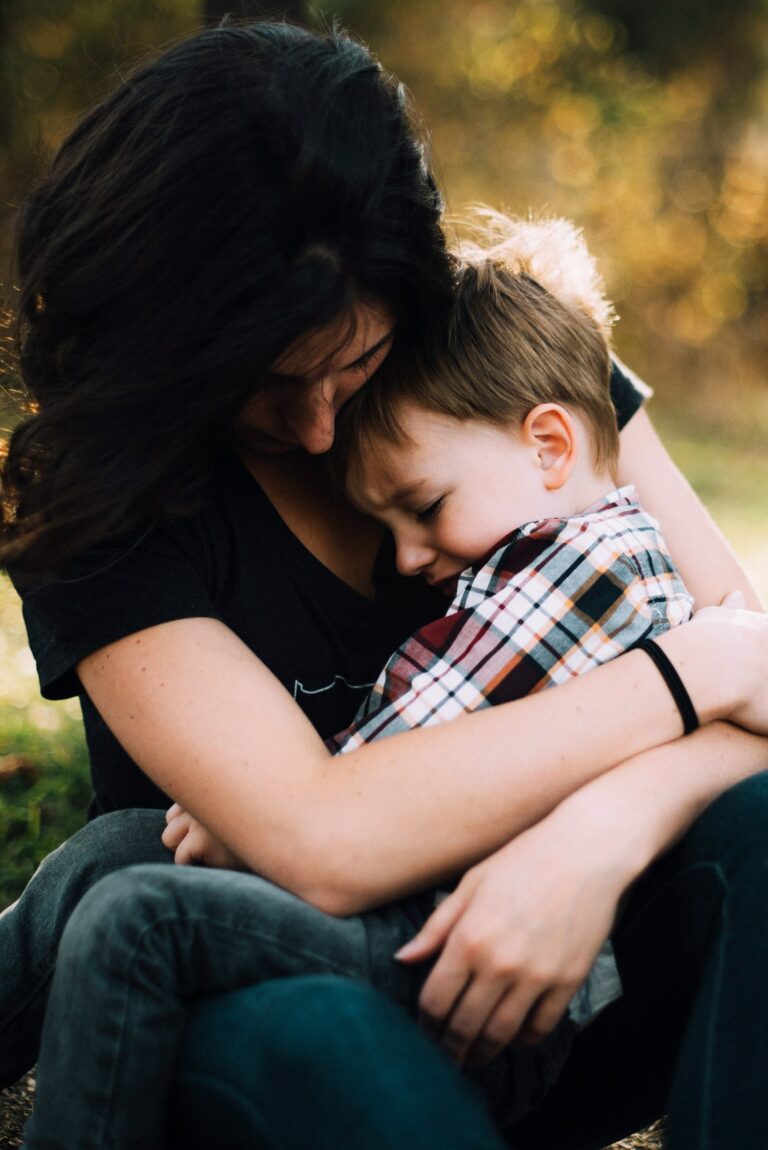Parental anxiety can morph into a dozen questions before you’ve even managed breakfast. Is it right to monitor every move? When should you say “no,” and when is it time to let go? Every parent grapples with a barrage of warnings, well-meaning advice, and the ever-present instinct to shield their child from the world’s unpredictability. Yet, evidence suggests children need both strong safety nets and the exhilarating freedom to experiment, stumble, and grow. How to protect your child without overprotecting? The art lies in finding where protection ends and autonomy begins, toggling deftly between reassurance and encouragement. You’ll explore what balanced protection actually means, ways to support emotional security, how to foster resilience and independence—even when every instinct tells you to step in—and practical strategies for modern risks, from digital pitfalls to daily responsibilities.
What does balanced child protection look like?
Giving your child a supportive environment is less about constructing an impenetrable bubble and more about building a trampoline—secure foundations, flexible boundaries, and room to bounce back. The science is clear: consistent routines, clear boundaries, and emotional warmth foster optimal brain development (the prefrontal cortex, the brain’s “control panel,” matures thanks to both structure and challenge). Instead of blanket restrictions, tailor rules like screen time or curfews to developmental milestones, always leaving room for negotiation as your child matures.
Open conversations are your strongest asset. Rather than imposing a categorical “no,” why not discuss risk? Teach your child the core of risk assessment—from crossing streets to online chats—so they internalize caution rather than simply fearing reprimand. Let that lesson percolate through their experiences, not just your instructions.
Fear versus healthy exposure: A medical and psychological lens
Dangers are omnipresent: household accidents, viruses, bullying, nutritional pitfalls. But living in perpetual fear doesn’t stave off harm—it only curtails experience. The pediatric research is unequivocal: shield too much, and children’s immune and emotional resilience languish. A child who never faces setbacks lacks the opportunity for their adaptability and immune system to gradually develop. Exposure to minor germs, diverse social encounters, and problem-solving situations, paradoxically, reduces long-term risk by fostering physiological and psychological antibodies.
Isolating children for “safety” can have reverse effects—loneliness, anxiety, low self-esteem. On the other hand, systematically introducing calculated challenges lets them calibrate their own danger radar, strengthening neural circuits associated with problem-solving and emotion regulation. Striking balance is the heartbeat of how to protect your child without overprotecting.
Recognizing overprotection—and its pitfalls
If you find yourself choreographing every moment of your child’s schedule, preemptively solving playground quarrels, or snooping on digital exchanges without genuine cause—pause. These behaviors, fueled by anxiety, often limit autonomy rather than fostering safety. Signs emerge in both parent and child: heightened parental anxiety, children appearing helpless in unfamiliar scenarios, or an inability to tolerate frustration.
Clinical studies link overprotection with increased risk for anxiety disorders, impaired self-efficacy, and difficulties forming peer relationships. When a child senses they’re not trusted to manage even minor setbacks, their natural urge to assert independence—a neurologically driven phase in child development—is stifled. Emotionally, this loop often passes between generations, as anxious children grow into anxious parents.
Positive outcomes of balanced protection
Building trust, resilience, and confidence
Children who experience consistent limits, but also the chance to test those limits, develop a sense of internal security. Why is this so profound? Because trust is the foundation for confidence, as highlighted in numerous pediatric psychological models (including the attachment theory). An open, communicative relationship—where feelings, mishaps, and triumphs are all acknowledged—shapes children’s fundamental belief: “Mistakes are okay. My family is my safe haven.”
Repeated opportunities to try, sometimes fail, and still be met with warmth foster robust resilience. With practice, the limbic system (brain region managing emotion) learns to modulate stress, providing lifelong tools for adaptation.
Autonomy in action
What does autonomy look like at home? It starts with manageable responsibilities: setting the table, deciding how to organize homework, or navigating friend dynamics. As children demonstrate reliability, parents should evolve the boundaries—loosening the reins for a preteen who consistently finishes chores, or allowing a teen to manage an outing with friends under shared safety agreements.
In medical terms, this “graduated independence” mirrors the scaffolding technique in developmental psychology: support is provided, then gradually removed as capability increases. Children experiencing this approach report higher satisfaction and stronger self-regulation.
Encouraging your child’s independence and growth
Age-appropriate responsibilities
Assigning duties is more than distributing chores; it’s a statement of belief in your child’s capabilities. For a preschooler, carrying their own backpack builds initiative. An older child, when trusted to solve a homework problem or resolve a minor playground conflict, gains a sense of mastery. Each task completed signals to the brain’s reward center—a tiny dose of dopamine—fueling motivation for greater challenges.
Teaching about risks, not just limits
Children benefit most when they understand the rationale behind family rules. Explaining why bike helmets are non-negotiable, or why handwashing is vital after playgrounds, transforms boundaries into learning opportunities. The American Academy of Pediatrics highlights this as a cornerstone of pediatric preventive strategies—children become partners in their own well-being rather than passive recipients of commands. Open communication also prepares them to resist peer pressure and identify unsafe situations autonomously.
The value of mistakes: learning through experience
There’s no better teacher than experience—ask any developmental psychologist. When a child forgets their snack and feels the mild discomfort of hunger, or loses a ball by kicking too high, the lessons settle deep. Intervening at every mishap blocks not only learning, but also emotional coping. Instead, inviting reflection with simple prompts (“What could you try next time?”) encourages your child to develop problem-solving skills and emotional vocabulary.
Modeling challenge management
Children learn by example. Narrate your own challenges—missed trains, difficult decisions, or disagreements—showing how you evaluate options and weigh consequences. The neuroscientific evidence is compelling: children mirror adult coping styles through neural pathways refined by observation. Involving them, when appropriate, nurtures a sense of control over their environment and gives a blueprint for sound judgment.
Cultivating open conversations
A child who feels heard, even with minor worries, is more likely to approach you with significant dilemmas. The Harvard Center on the Developing Child underscores the importance of “serve and return” interactions—responsive, attentive exchanges that fuel cognitive growth. Open, non-judgmental listening builds a bridge of trust that will weather the tempests of adolescence.
How to protect your child without overprotecting: practical strategies
Home routines for balanced growth
Routines teach children stability and responsibility but should also leave space for downtime and creativity. Invite your child to help establish schedules for meals, play, and schoolwork. Allow flexibility: an unexpected outing, a skipped chore for illness, or tweaking study times as extracurriculars change. This dynamic approach mirrors real-life unpredictability, strengthening adaptability and reducing stress when routines shift.
School and social development
Healthy friendships and self-directed play advance social-emotional skills far beyond what structured activities alone offer. Allowing your child to resolve minor peer disagreements—without immediate intervention—develops negotiation and conflict management skills, both protective against bullying and essential for mental health. Engage with teachers and counselors when significant patterns of difficulty arise, but let your child experience the natural ebb and flow of peer dynamics.
Digital landscape: safety, not surveillance
As digital natives, children require guidance to navigate online safety. Set clear rules: time limits, privacy settings, and expectations for online behavior. But skip unwarranted surveillance—regular open dialogues about online experiences prove far more effective in reducing risk-taking and cyberbullying. Pediatric digital health research supports progressive autonomy; as your child demonstrates responsible choices, increase their freedom, always reinforcing principles of digital citizenship and mutual trust.
Parental wellness: managing fear and pressure
Taming parental anxiety
Parental worry is not just common—it’s biologically driven. Neurotransmitters like cortisol (the “stress hormone”) spike when risk is anticipated. Learning to recognize when worry is displacing supportive guidance is essential. Self-care—structured relaxation, support groups, or short breaks—has measurable benefits, reducing stress markers in studies. If anxiety translates into inability to rest or persistent negative thoughts, consult a mental health professional for coping strategies.
Harmonizing family approaches
Children thrive on consistency. Conflicting parental styles can undermine both discipline and emotional safety. Work out differences privately, then align your shared boundaries. When relatives or external opinions differ from your approach to how to protect your child without overprotecting, ground your decisions in your principles and your child’s needs, kindly reinforcing your position when questioned.
Putting balance into practice: steps for everyday parenting
Teaching safety and decision-making
Role-play scenarios: crossing busy streets, encountering strangers, handling playground disputes. Empower children to make small choices and discuss outcomes, reinforcing wise decisions and treating mistakes as opportunities. Studies confirm that children allowed these practice runs are both more capable of avoiding harm and more resilient in the face of challenges.
Monitoring versus trusting
Overseeing children is a gradient, not a switch. Young children require close adult supervision, but as their risk awareness matures, step back. Exchange surveillance for short, meaningful check-ins and negotiate freedoms—like visiting a friend’s home or increased screen time—based on demonstrated reliability. This incremental shift boosts both responsibility and trust.
Adjusting with your child’s growth
Reassess rules and freedoms periodically—adolescents, for instance, crave increased independence but benefit from clear parental expectations. Prepare your child for new situations, discussing possible risks and strategies for coping, and let them handle more complex responsibilities as readiness becomes evident.
When to step in—and when to step back
Immediate intervention is necessary when physical harm, unsafe environments, or developmentally overwhelming situations arise. Look for red flags—intense, persistent distress, withdrawal, or sudden changes in behavior—and be ready to support with empathy and, when needed, professional help. Conversely, for minor setbacks, social disputes, or routine disappointments, standing back strengthens coping skills.
Pitfalls to sidestep
Over-involvement has many faces: perpetual “no’s,” orchestrating every activity, checking privacy without substantial grounds, “rescuing” too soon. Resist these temptations:
- Allow unstructured time: innovation and self-regulation often bloom in boredom.
- Accept minor risks: learning to fall, both metaphorically and literally, is part of childhood.
- Foster open, honest discussions over punitive or fear-based warnings.
Let curiosity, exploration, and trust become your family’s touchstones.
Key Takeaways
- Balanced child protection—combining secure emotional foundations, consistent routines, and graduated autonomy—builds strong, resilient children.
- Overprotection can undermine confidence, self-regulation, and future decision-making.
- Age-appropriate responsibilities, discussions about risk, and space for learning from experience are fundamental.
- Communication and trust are the scaffolding for healthy independence.
- Parental emotional wellbeing shapes children’s growth—caring for yourself directly improves your child’s outcomes.
- For personalized advice and free health questionnaires for your child, explore further support with the Heloa app.
How to protect your child without overprotecting? It’s a journey—one where both you and your child learn, sometimes stumble, and always move forward together, step by step.
Questions Parents Ask
How can I teach my child to make safe choices without making them anxious?
One gentle way to encourage safety without raising anxiety is to focus on open conversations. Describe real-life scenarios together and ask your child what they would do, listening to their ideas before sharing your advice. Explain safety in a calm, non-alarming way, and reassure them that making small mistakes is part of learning. Step by step, your child will gain confidence to make choices, knowing you trust their abilities. Remember, providing space to talk and a framework for thinking critically about situations helps children feel secure rather than scared.
What do I do if I disagree with my partner about what is “too protective”?
Disagreements are common and totally normal in parenting—every adult brings their own experiences and worries. If you and your partner don’t see eye to eye, try to discuss your concerns openly and kindly, away from your child’s ears. Focus on your shared values and what you both want for your child’s happiness and growth. Sometimes, it helps to talk with a neutral third party, such as a counselor or a healthcare professional, to find solutions that respect both perspectives. The most important thing is to present a united, supportive front to your child, as consistency helps them feel secure.
How do I know if I’m being too protective?
It’s not always easy to recognize overprotection, especially when your intentions come from love. Some gentle signs include stepping in quickly to solve problems your child could try to handle on their own, feeling anxious whenever your child faces minor risks, or regularly saying “no” to experiences other children their age are having. If you notice your child hesitating to try new things, easily discouraged by setbacks, or frequently seeking reassurance, these may be gentle indicators to reflect on your approach. Give yourself grace—it is normal to worry. Small, gradual adjustments towards encouraging independence can make a big difference, for both you and your child.









